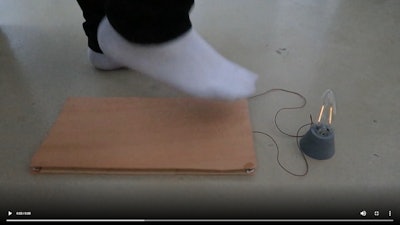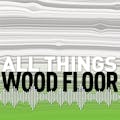
 A still from a video demonstrating how the flooring can power a household lamp.
A still from a video demonstrating how the flooring can power a household lamp.
The researchers reported in the journal Matter that they have turned wood flooring into a nanogenerator by layering pieces of wood and electrodes, UPI reported. When walked on, the flooring becomes electrically charged in a phenomenon known as “a triboeletric effect”—enabling a flow of electrons.
One of the wood layers in the flooring is coated with a silicone called polydimethylsiloxane that acquires electrons. Another layer in the flooring is embedded with a type of nanocrystal that loses electrons. Researchers said spruce was the most effective wood species in the experiments, producing 80 times more electricity when compared with other wood species.
Researchers said the flooring could power lights and small electronics in homes. "The ultimate goal is to understand the potentialities of wood beyond those already known and to enable wood with new properties for future sustainable smart buildings," Guido Panzarasa, senior author of the report, said in a statement.
In 2018, researchers at the University of Wisconsin also crafted a prototype engineered wood floor that, when stepped on, produced electricity.
Related:




















